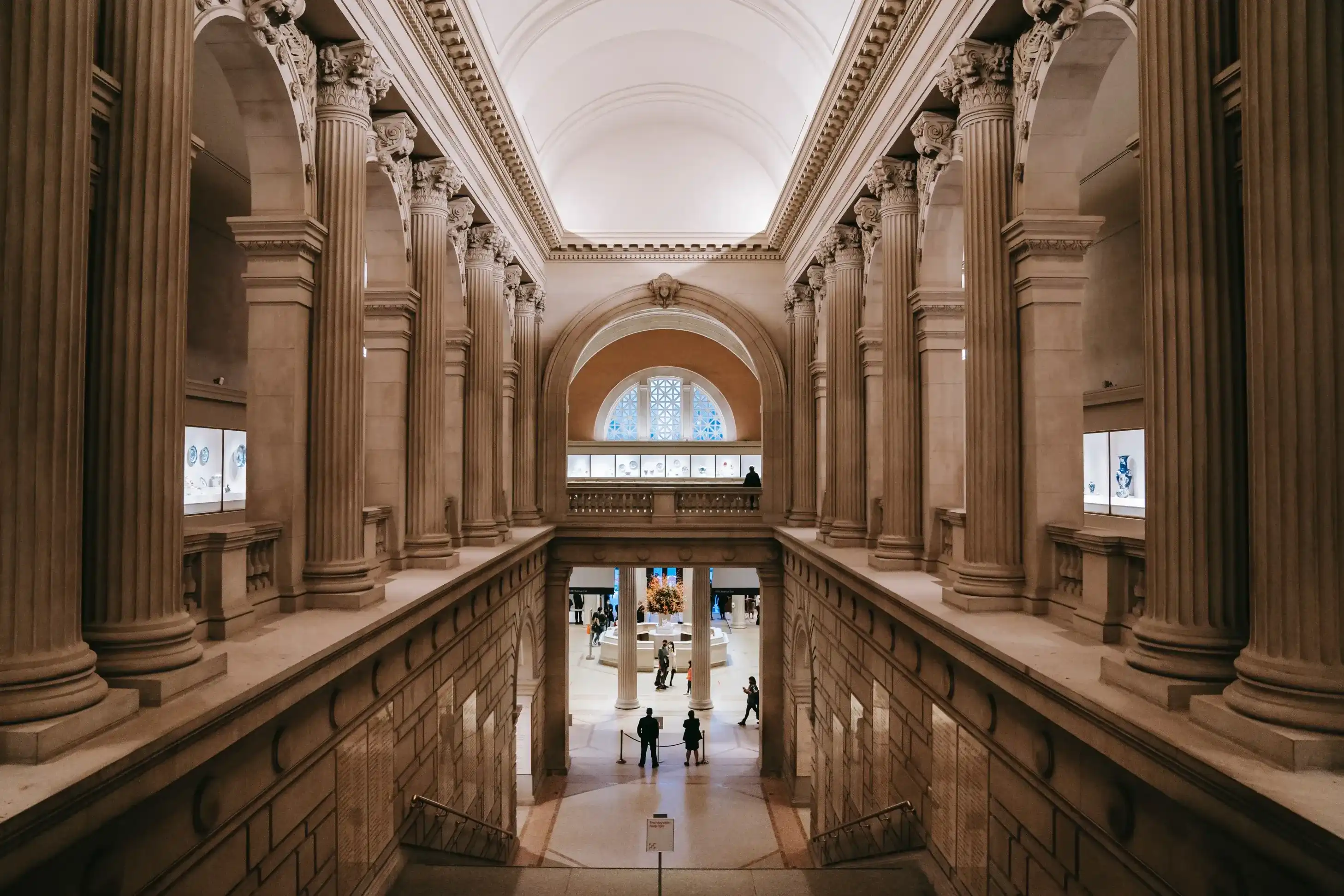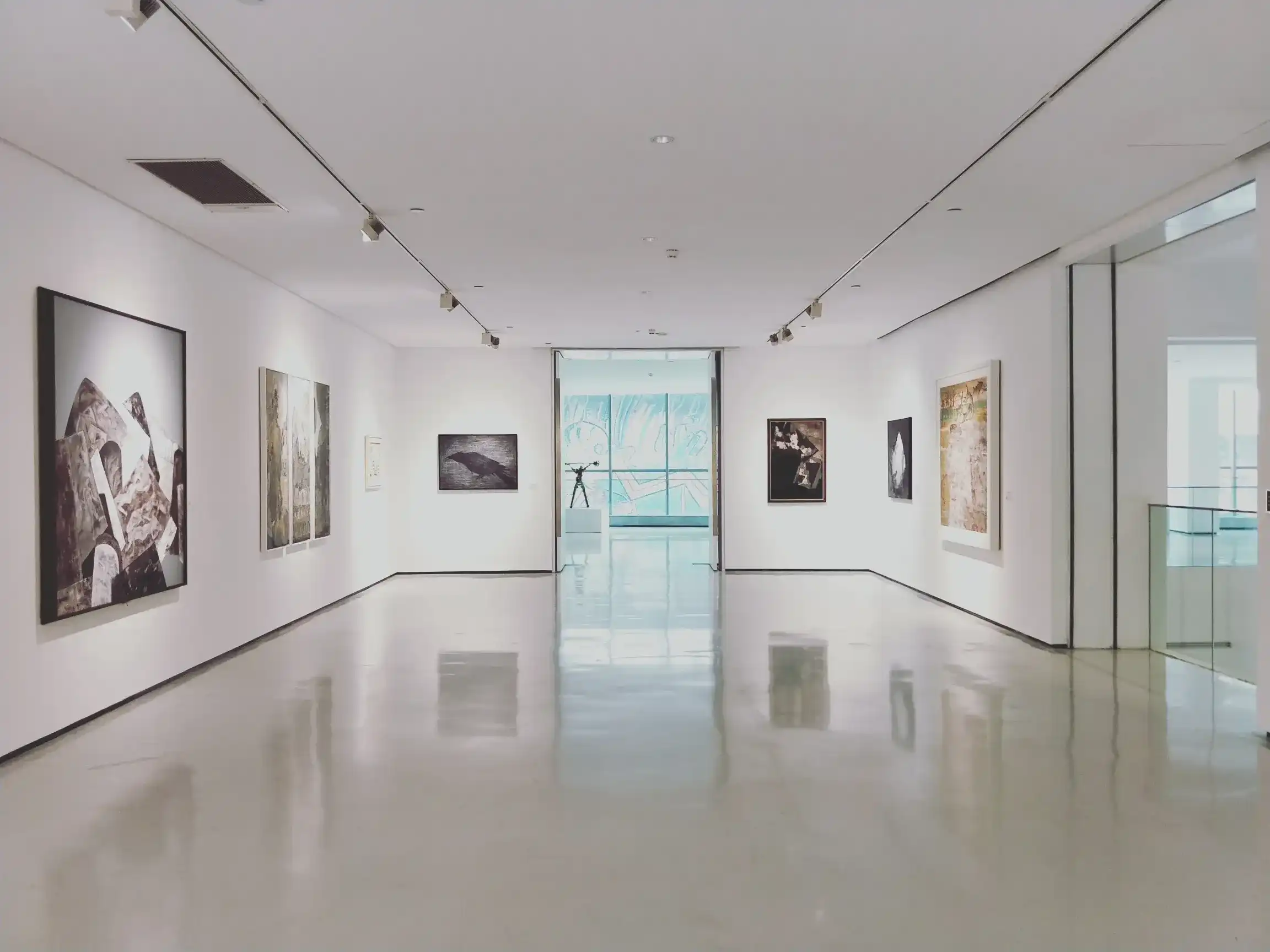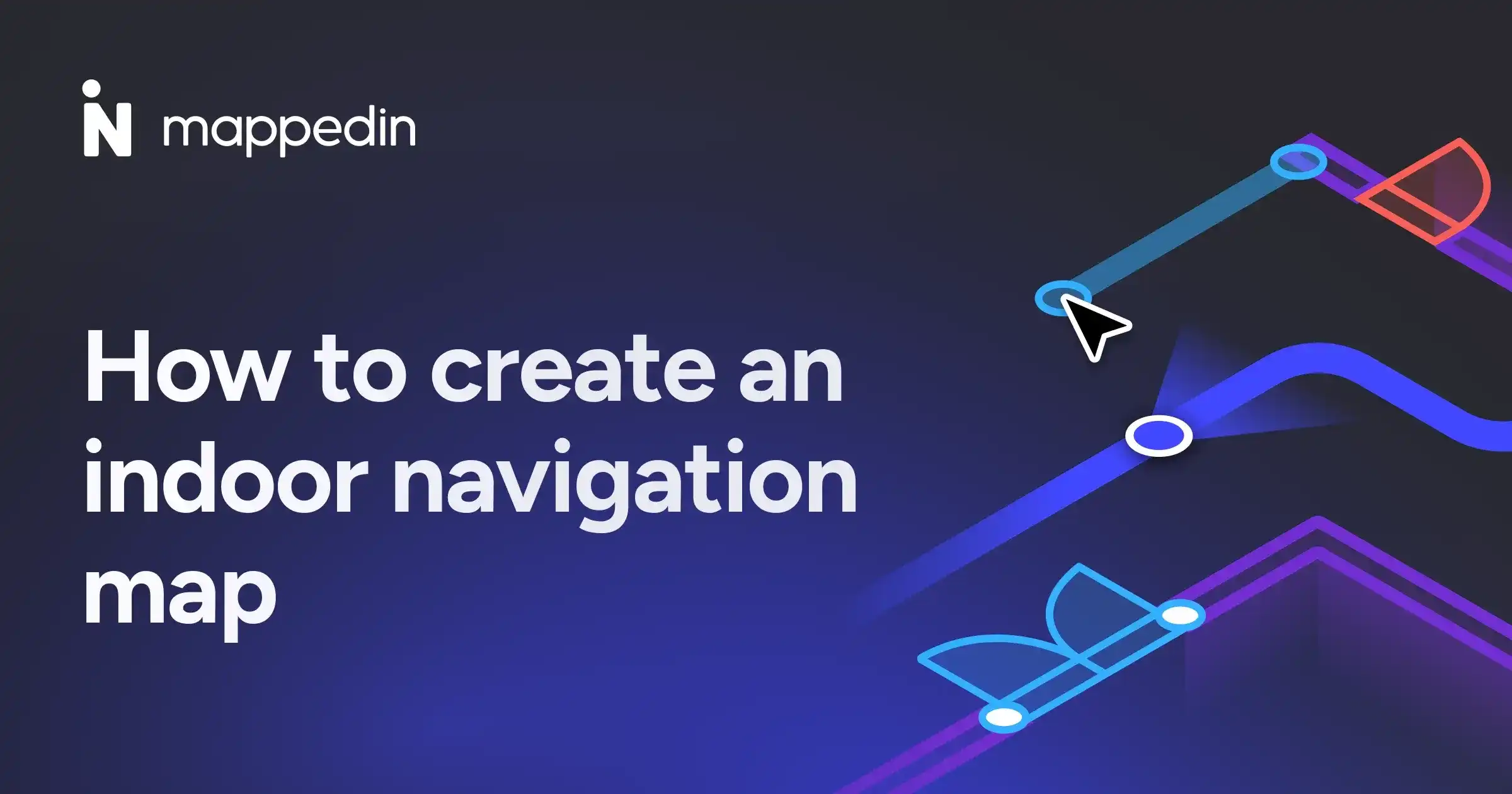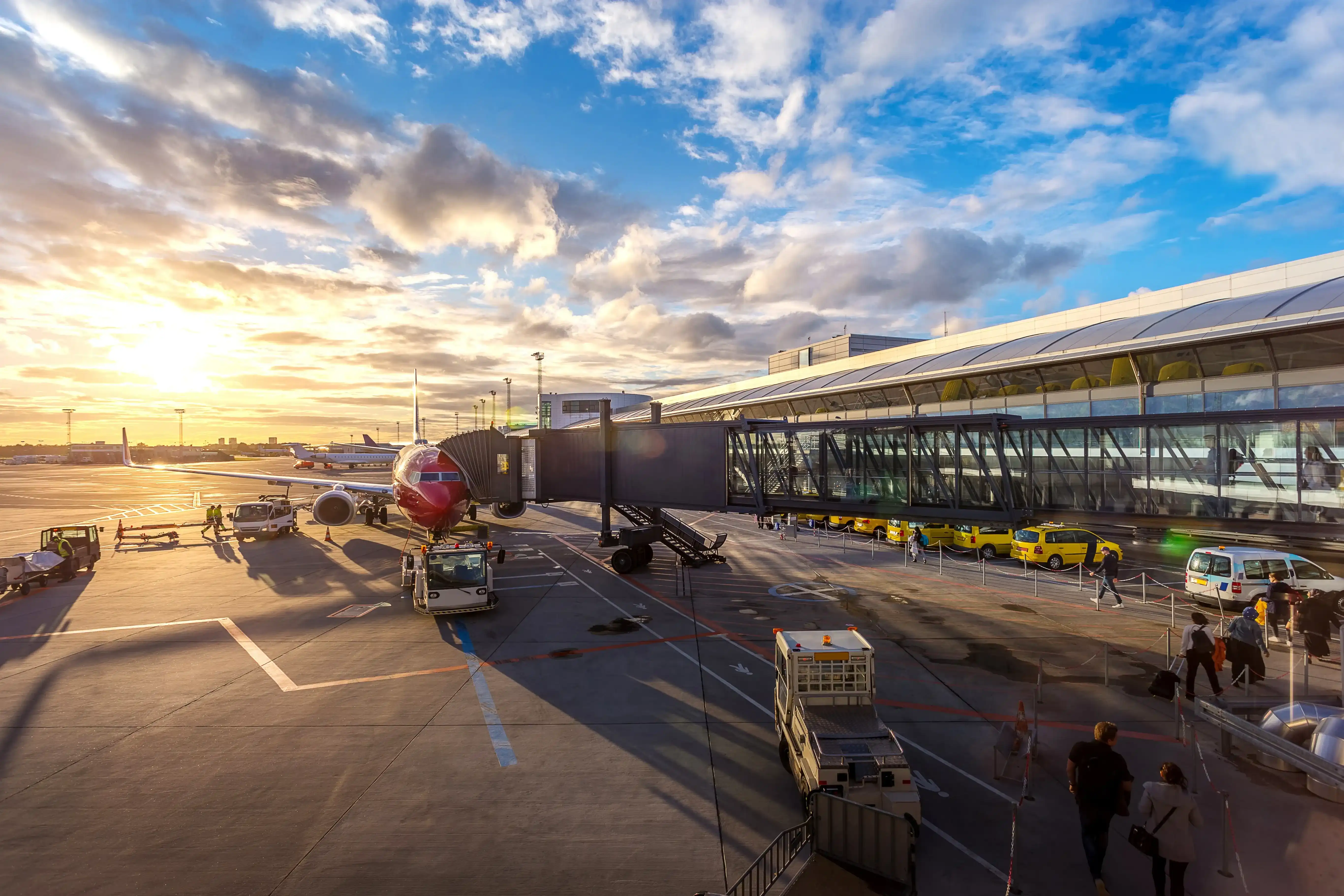Museums and art galleries showcase interesting pieces that will catch the public's attention and drive people to the exhibit. However, grabbing the attention of the public can go beyond the collections and come from the venue itself. An indoor mapping system can digitally transform a venue and create a unique museum experience that will leave a lasting and positive impression on visitors.
Using digital maps in museums & art galleries
Why museums and art galleries need Indoor mapping
An interactive digital map can provide visitors with a more efficient way of navigating through the museum, in turn enhancing the customer experience. A visitor map can highlight points of interest such as different collections or artists, tickets or check-in, fundraising events, and gift shops. This makes it easy for customers to find exactly what they are looking for in complex exhibitions. Indoor mapping is the foundation for user-friendly indoor navigation systems that provide visitors with easy access to perks and amenities. This blog will cover 6 ways to use indoor maps to create a modern and advanced museum experience.
6 Ways to use digital maps in museums & art galleries
Digitizing exhibition and gallery maps
Undergoing a digital transformation can allow a museum or art gallery to visualize their space and plan where art pieces can be placed with advanced routing technology in mind. Building an indoor navigation map can help improve the visitor experience and communicate with users. Museums can have a variety of different exhibits at different times, resulting in the venue's layout fluctuating frequently. A digital map ensures exhibit layouts are using the space in the most efficient way possible. Indoor maps can help minimize a museum's environmental footprint by reducing paper usage from printed maps. A digital museum can also save costs by avoiding reprinting the venue layout on physical maps each time a new exhibit is created.
With a Map Editor, layout changes can be made digitally in a draft mode to try unique designs and see which layouts allow for the most efficient routes that hit all desired points of interest. These changes can then be immediately uploaded across all platforms for a cohesive visitor experience. Draft mode can also allow managers to pre-plan for future exhibitions to increase productivity and the success of exhibitions by having more time for marketing and creating an interest in customers.

Provide digital tour experiences
Digitizing exhibition and gallery maps can promote digital tours and navigation for museums. A digital tour can create a seamless and enhanced user experience by leveraging indoor positioning technology to direct visitors to certain locations. As visitors navigate through the venue, an indoor positioning system can prompt audio from their device that explains the art piece's history, background, significance, and more. When integrated with an interactive museum mobile app, a digital tour guide can also provide users with directions to other exhibits that may interest a user, according to their profile and previous visits.
Another tour that can be provided through interactive digital maps is a virtual tour (VR) for those who are unable to visit the exhibition in person. For instance, if a person is injured, facing travel restrictions, or time constraints, they can wear a VR helmet and walk the museum halls in the safety and comfort of their own home. These tools can give opportunity to those who would be unable to attend the exhibit without advanced technologies put in place, while also promoting the museum across the globe.

Push notifications
Another option for indoor navigation to create an enhanced digital experience could be through push notifications. Notifications can be integrated into an interactive visitor map to give exciting information to guests throughout their museum trip. As a visitor travels through the exhibits, they can receive notifications that provide details or explicit information about artifacts and art pieces. A museum can add more extensive content about the venue and send that information to guests within the building, such as its exhibits, services, and current or upcoming events. A visitor journey map can allow for personalized messages to be sent to users as they arrive at the museum to leave a positive impact on those attending the exhibit.
Push notifications can be used to provide offers and deals on gift shop items, or even to promote deals on partnering restaurants. For example, a user journey map can implement indoor positioning functions to send a notification to visitors when they leave the exhibit showcasing a 10% off promotion at a nearby restaurant or a list of restaurant recommendations based on their current location. Push notifications can be an additional marketing and sales channel for galleries and drive additional revenue. As each individual customer leaves, they can be promoted with a survey so managers have a valuable collection of feedback from visitors that can highlight areas that may require improvement and immediate attention.
Visitor engagement
Location-based technology can be used to assess and improve visitor engagement at art museums and provide deep insights. An indoor visitor journey map allows a digital museum to learn behaviour-based visitor information and measure detailed, real-time insights. Managers can see the average time spent at an exhibit to see which collections hold a visitor's attention and reassess the ones that don't. This can help managers assess the success of exhibitions and make decisions on exhibit arrangement, organization, and staff management.
Managers can also use visitor comprehensive real-time data insights to evaluate the effectiveness of advertising campaigns and see which marketing plan is driving the most foot traffic. An analysis of visitors can help managers understand what fascinates the general public and use this information to help choose and curate specific exhibits with finely targeted niche audiences that have the same habits.

Pre-plan your trip
An indoor visitor map can allow users to pre-plan their trip to the museum using multi-stop exhibition navigation systems. Visitors can plan their route from exhibit to exhibit ahead of time and identify points of interest along the way. An indoor map can showcase the most efficient route that will hit all points of interest in a proper order, whether that be chronologically based on exhibits chosen or according to a user's geographic location. Pre-planning a trip can eliminate visitors missing a certain collection they wanted to see and feeling like they didn't get what they paid for. Indoor maps can help users better manage their time when pre-planning, as they can account for booking dinner reservations and making a full day out of their trip.
Traffic flow analysis
A museum management team can monitor the movements of visitors through heat maps to ensure the fastest routes have been pathed and assess areas that may have overcrowding. This can detect bottlenecks and take necessary actions to change the layout of the venue to avoid congestion, so each visitor can clearly see the collection of art they are interested in. With the integration of location-based technology and analytics, a visitor map can be used to assess the impact of push notifications and marketing plans. Management can use traffic flow analysis to see the influence of location-based offers and if they are driving the foot traffic that is desired. A user journey map can also be used to understand the best pathing for exit routes in the event of an emergency. A museum can improve security by tracking traffic routes to ensure smaller hallways are avoided when notifying visitors to exit the building in an emergency situation.

The key element to creating a delightful gallery experience is an indoor visitor map. Indoor mapping can create endless possibilities for exhibits to deliver a digital experience that will drive foot traffic and create an interest in the museum that goes beyond the collection of art. To start creating an efficient museum solution, contact us and book a demo today.
Share



